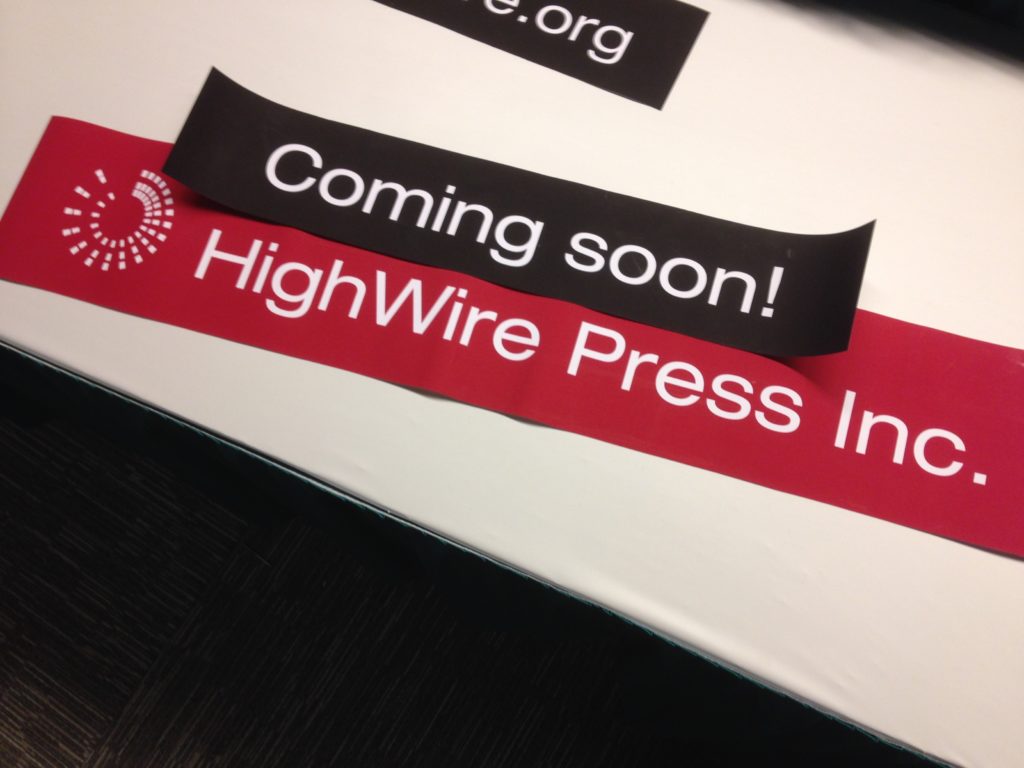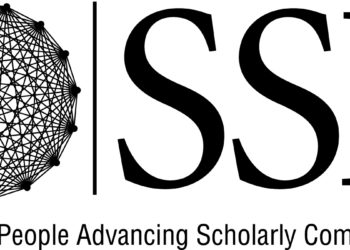Changes in ownership in our community aren’t that rare. In fact the pace of mergers, acquisitions and spin-offs has occurred at a fairly regular pace. One company in our community has experienced five changes of ownership in the past 15 years, along with several other major mergers and acquisitions during the same time period. What is more unusual in our space is when a university, a library or non-profit spins off a for-profit company. There are many successful non-profit and university publishers and many of them also have successful digital publishing initiatives. Some have been true innovators in moving scholarly communication online over the past two decades. Unlike other digital ventures at universities or non-profits, the number of scholarly publishing ventures that were spun off during the past two decades amounts to a very short list.

Bucking this trend is now HighWire Press, who announced Friday that it would become HighWire Press Incorporated and spin out of the Stanford University Library, which has been its organizational home since HighWire’s founding in 1995. While this is by no means the first technology transfer out of a university to an independent company, and Stanford University is both prolific and has an enviable track record of success in these undertakings, the transition of HighWire Press from an initiative of the library to a new corporate identity is one worth taking note of in our community.
The press release describes a “significant equity investment to support its strategic growth from Accel-KKR, a leading technology-focused private equity firm.” As such, Accel-KKR will become a majority stakeholder in the new HighWire Inc, with Stanford University’s investment arm, the Stanford Management Group, retaining a significant minority stake in the newly independent venture. Accell-KKR maintains $2.5 billion in funds and focuses on “investing in lower middle market software and technology-enabled services companies.” According to Bloomberg BusinessWeek, Accel-KKR targets buyout investments toward “assets that are considered or are likely to be considered non-core assets that will typically include businesses with business models that are inconsistent or are incompatible with the parent and may have been under-invested in for some period.” This seems to describe in broad terms the situation with HighWire Press, so the partnership appears to make a lot of sense from a mission perspective. The exact terms of the deal have not been disclosed.
Obviously, as an operating unit of a private institution the finances of HighWire are not public information. However, given its track-record of success and innovation, as well as the growth and investments that has taken place there over the decades, it can be assumed that HighWire was generating sufficient income to re-invest in technology and possibly modest surpluses, or at least contributions to general overhead. However, any surplus in a university context is certainly not what an equity investment company will expect. Realistically, increasing margins will either mean one or more approaches to raise the bottom line: greater staff efficiency, higher customer costs, increases in market share, increases in the scope of services, or reductions in services. How HighWire will come to meet the goals of an investment firm is an open question. One can suspect why an equity firm would be interested in leveraging the potential for success here—both financial and technologically—, but what is in in it for the university, HighWire and its customers?
Some of the issues remain familiar to me from my own experience. Back in the heydays of internet start-ups at the end of the 1990s, I worked in an environment similar to HighWire. At the time, I was on the management team of the Johns Hopkins University Press as Project Muse was growing rapidly and opening up its platform to other University Presses as a service provider. Just as with every other publisher at the time, it was challenging to compete for top technology talent, something that remains true to some extent even today. Whereas for-profit or even large non-profit publishers could invest in and compete for the top-dollar talent, those initiatives that were developed in the context of a university system had the added challenge of fitting their web-startup infrastructure into the bureaucracy of a large university administration. This limited the compensation packages that could be offered, as well as obviously prevented any type of ownership or stock compensation, which became the norm for tech start-ups.
Operating within that environment also precluded the large-scale infrastructure investments that are often needed by technology companies. Any such investments had to be made from existing reserves or surpluses, or through the contributions of partners or funding organizations. These approaches can work in some structures, but they have their own problems. While being part of a university is often a safer environment in some ways, that safety does hamstring an organization attempting to be innovative.
This move raises the question: “Why now?” Certainly, HighWire was sufficiently successful in the late 1990s to have been viable as a spin-off at that time. And there was no shortage of capital in Silicon Valley then either. Certainly, the principles and vision of both Mike Keller, the University Librarian at Stanford, and John Sack, HighWire’s Founding Director, had a lot to do with maintaining the close ties to the University environment and mission. Both were and remain deeply committed to the values of scholarly publishing and to library/publisher partnerships, but in the face of that leadership, why make the transition at all?
Other more practical benefits at the time, such as riding on the backbone infrastructure of Stanford University might have been a barrier to setting off on its own in the 1990s. It’s hard to reflect now on the costs and challenges of launching a tech company 15 years ago and the burn rate for most companies was too high to be sustainable. This certainly is not an issue any longer with any range of cloud-computing services available for a fraction of the costs seen two decades ago. More likely, the reputation benefit that HighWire could achieve in recruiting publisher partners as part of Stanford was an element toward retaining the connection. Now that HighWire Press has a stable client base of some 134 publishers more than 3,500 publications, with more than 7.1 million articles, perhaps the need for the Stanford brand pass-through is less necessary.
It will be interesting to see if there is any perceptible change in culture, slowly, over time, as HighWire develops as its own independent entity. Also, will there be any perceived backlash from the clients, who have always viewed their relationship with HighWire as more of a partnership than as a vendor-client relationship. At least some of the initial reactions I have heard indicate that this special-partnership tone remains strong among HighWire customers, due in large part to how the transaction appears to have been handled internally. Of course, no one ever hears criticism of a marriage during the reception the evening of a wedding. Whether everyone is as happy about this move as appears at first blush could take some time to determine.
It is important to reflect on a slight divergence with some of the stated commitments and the practical realities. Much has changed in the nearly 20 years that have passed since HighWire’s formation. Many of the library and library publishing initiatives have been more focused in recent years of reducing overall publication costs and making more tools and resources available for free or as low-cost as possible. Most of the recent library or foundation-funded activities in scholarly communication have been the focused on the creation of open-access content, open-access business models or open-source tools. HighWire Press and this move toward incorporation seem at odds with those general, mission-driven trends. While one can’t decry an organization’s success in business or its model, but in an era of open development, there is an incongruity with that philosophy and spinning out a for-profit company to provide high-cost, value-added services to the scholarly community.
Over the years, HighWire has been seen as a premium service provider, providing an excellent level of service, but at a cost that, while competitive, couldn’t be said to be the low-end option. One of the challenges that HighWire will face will be how to maintain this premium service option in the face of a commoditization of publication services. A variety of open-source tools and low-cost service models exist for publication of journal content. Many new publications, often open access, have launched using these tools, some with a per-article publishing cost in the single dollar range – that being digital publishing production, not necessarily editorial. It is an open question whether HighWire Press (or other similar providers for that matter) can maintain its role in that environment when publishers are being squeezed by competition. If the market potential for the company is not in expanding its per transaction income (i.e., per publication, such as article, chapter, book, etc.) because of competitive pressures, might new income come from other sources?
Looking forward, what will the liberated HighWire do with its new-found freedom? Might it leverage its income, its new private financing, and its potential access to open-market capital resources to streamline or consolidate some of the digital publishing activities? Could this be the beginning of some consolidation in the overall space of digital publishing services? Additionally, there have been many technology start-ups in digital publishing, which have been acquisition targets over the past two-to-three years. A variety of new tools from these start-ups are starting to roll out, such as reputation management, annotation, data management, author services, and scholarly workflow tools. These are getting snapped up by other companies and it likely was difficult to be ahead of the competition’s innovation within the constrained structure of a university library. For example, HighWire has been developing a tool called eStacks, “for researchers to collect, organize, and share the scholarly content that is meaningful to them.” This seems akin to other existing services like Mendeley, Quosa, ColWiz, or Zotero. To what extent might the development been more robust in a more nimble independent environment.
It may be too soon to tell, but initial reactions appear to be positive about this move. What will be intriguing in the coming months and years will be to watch will be how this impacts the partners as well as the other corporations interacting in our community space. Few transitions go smoothly, so bumps are to be expected. However, at least the HighWire leadership can enjoy a moment in the sun to bask in their success both of their long-term achievements as well as their more recent financial successes. Hopefully, the benefits will accrue to everyone involved.
Discussion
5 Thoughts on "HighWire Press Moves Out of Stanford and Becomes an Equity-funded "Inc.""
As I recall it, High Wire was organized on a wave of anti-profit sentiment fostered by university managers since the 1980s. Does anyone else see the irony?
To some extent, HighWire was founded to make sure that large commercial publishers didn’t use their ability to afford expensive technology transitions as leverage in the market. Over the years, it has expanded to include some commercial publishers. Evolution is natural, and business has requirements. I think the most salient thing about this step is summed up in Accel-KKR’s mission, which is to help “businesses with business models that are inconsistent or are incompatible with the parent and may have been under-invested in for some period.” Stanford is a large, diverse academic enterprise. Finding room at the funding trough was probably more than a little difficult for this relatively small endeavor out of the libraries. It seems a reasonable and not unprecedented step.
As a minor footnote, you might have noted that Project Muse got substantial start-up funding from the Mellon Foundation, which often has been the source of such capital for university-based innovations. Penn State Press, which I then directed, was the first press to join Project Muse, in 2000, when Johns Hopkins expanded it beyond just JHUP journals. One reason is that we had a long-=term interest in the Project because JHUP had hired away our journals manager, Sue Lewis, to be its co-developer along with Michael Jensen.
Attending SSP, and then the Atypon user conference, got me wondering about just how big this business is. Do Atypon, Highwire, and their cohorts represent $100 million in annual revenue? Much less? I fret that such a small software/services market will continue to thwart innovation and competition in this space.
I just hope that this expansion means that Highwire’s customer support gets an upgrade.



